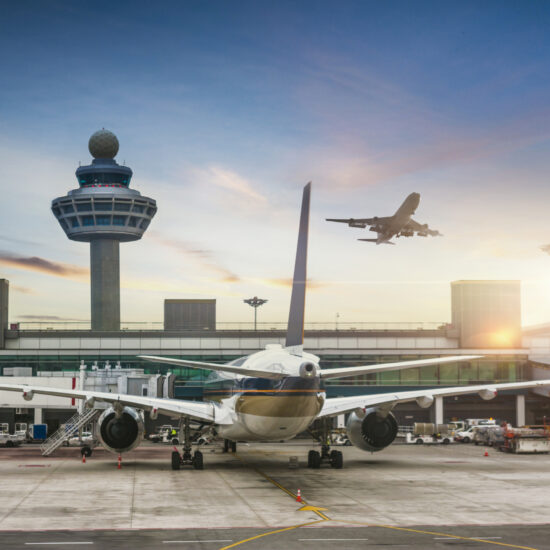
Throughout “Star Trek’s” long 56-year history, the Starship Enterprise has been designed, redesigned, reimagined, blown to smithereens and then reimagined again for the various TV incarnations and feature films based on the classic series created by Gene Roddenberry.
But for the prequel series “Strange New Worlds,” which recently concluded its highly-praised first season, the responsibility to get the Enterprise just right was not lost on production designer Jonathan Lee. This was, after all, the Enterprise that was commanded by Captain Christopher Pike (played by Anson Mount), which was the immediate predecessor of the Enterprise that Captain James T. Kirk first made famous back in 1966 with “The Original Series.”
“We were all of the mind that the Enterprise is a star of the show,” Lee explains. “It’s a major player. It’s an actor, really. It’s not a weapon of war. It’s one when it has to be, but that’s not its function. It’s a scientific research vessel. It’s also a sanctuary. We discussed the Enterprise in that very creative way before we got into the detail of how we were going to deal with the individual elements of it.”
Those elements started with the Bridge, which already made its debut during the second season of “Star Trek: Discovery.” But now that Pike’s Enterprise was getting its own show — one that will hopefully (and boldly) go the distance with a five-year mission — that called for significant revisions to the nerve center of the Enterprise.
“We’ve taken the set that we’ve inherited, but we did a great deal of work,” Lee said. “[Executive Producer] Akiva Goldsman briefed me to bring it back to ‘The Original Series.’ We had to move things around a little bit. We moved the captain’s chair around so that Captain Pike could throw a look to helm and navigations really easily, and that would work with the camera.” And since the viewscreen that was seen in “Discovery” was depicted using visual effects, a physical representation of the viewscreen was designed and added to the Bridge set for “Strange New Worlds.”
Lee also changed the color language from the “Discovery” version of the Enterprise. “It was quite cool with blues and greens and cool yellows. I said, the Bridge must feel warmer, particularly the motion graphics on all the monitors. When you see the before and after, it’s pretty dramatically different, but it’s much more intimate, and it feels more like our show.”
But where Lee worked from a previously constructed design for the Bridge, he designed the Sickbay set from the ground up to allow for more ambitious shooting. “Our little mantra for our show is ‘scope and scale,’ and one of the influences for the whole thing generally is ‘Lawrence of Arabia.’” Lee says. “That’s what drove the whole scale of Sickbay. You can take the camera on a dolly; you can go all over that set without stopping, and we can bring a crane in to shoot straight through it.”
And where the beds from “The Original Series” were positioned against the wall, Lee put the beds for “Strange New Worlds” in the middle of the room, so the cameras could go all the way around them and not miss an angle. “Sickbay follows the true radius of the ship, so the beds are set on a radius, the walls are set on a radius, and you really feel like you’re in the circular shape of the saucer section of the ship.”
But perhaps Lee’s biggest challenge came with the design of Engineering, which had to look powerful enough to propel the Enterprise to Warp 9 and beyond. “I wanted to see this amazing structure of the ship, so I thought of what we call the Intermix Chamber, which is a big feature in the middle of Engineering,” he said. “And in the middle of it is this piece that looks like the Sun boiling away, and we can see the Warp Core at work doing its thing.”
To achieve that effect, Lee used cutting-edge new technology called Augmented Reality, or an AR studio, in which a digital wall that’s 25 feet high, 70 feet wide and 100 feet deep is wrapped around the physical set like a horseshoe and contained a 3-D image of the virtual portion on its LED screen.
The decision to build the AR studio was done at the 11th hour and turned out to be just what the Engineering set needed. “We only had to build the foreground element where the actors would work, and the handrail around the elevated area where the actors are becomes the handoff between the physical set and the digital AR extension. And that was a phenomenal decision because it then allowed us to make the scale of the Warp Core look even bigger,” Lee said.
In all, Lee and his team of 60 people designed 10 Enterprise sets for “Strange New Worlds,” which also included the Transporter Room, two corridors, crew quarters, the shuttlecraft interior, the Mess Hall and the Cargo Bay. And there’s more where that came from for the Enterprise in Season 2 (which recently wrapped shooting), such as the Port Galley, a science lab, the Nacelle Room and the Shuttle Bay.
















